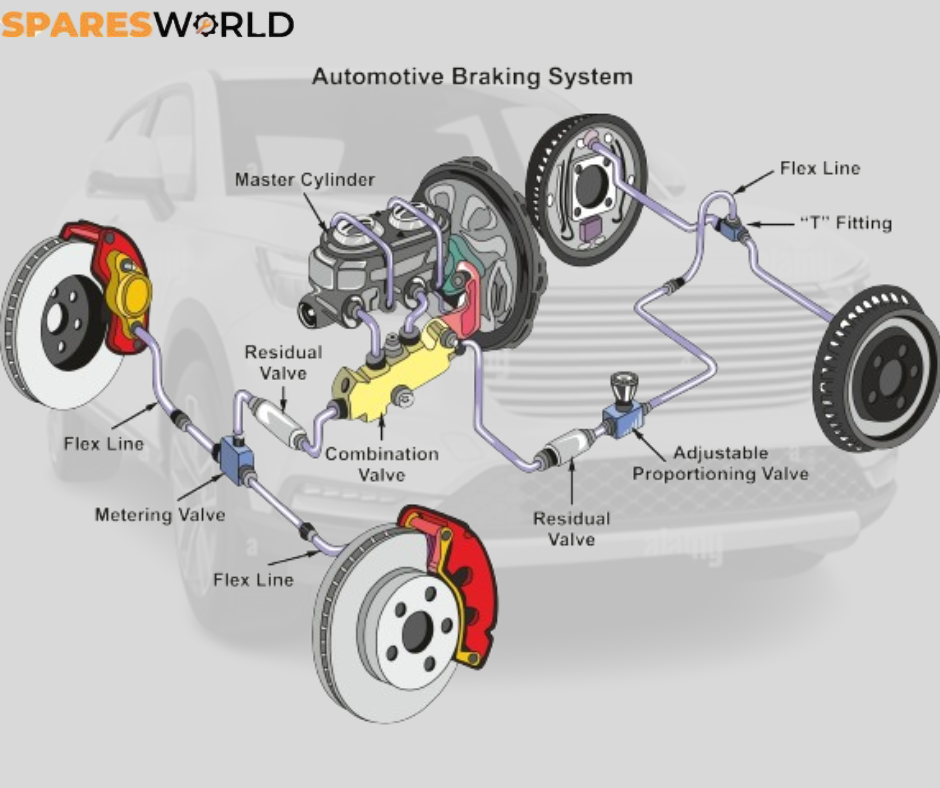Understanding Your Car’s Brake System: The Power Behind Every Stop

Picture this: you're flying down the highway, cruising smoothly when suddenly—red lights flash ahead. Instinctively, your foot hits the brake pedal, and your car smoothly decelerates to a stop. Ever wonder what just happened under the hood? The process is more thrilling than you think! Your car’s brake system is a marvel of engineering that keeps you safe, and understanding how it works could make all the difference.
Ready to dive into the world of brakes and discover what’s happening when you slam that pedal? Let’s hit the brakes—literally—and break it down.
How Brakes Work: The Split-Second Reaction That Saves Lives
When you step on the brake pedal, you unleash a force that instantly triggers a powerful chain reaction. It’s not just about your foot pressing down—there’s a whole lot going on beneath the surface.
First, the brake pedal activates the master cylinder, which sends brake fluid rushing through a network of hoses and lines. This hydraulic fluid transfers the force from your foot to the brake calipers or wheel cylinders, depending on your vehicle’s braking system. In disc brakes, these calipers squeeze brake pads against a spinning rotor, creating friction that slows the car down. In drum brakes, the wheel cylinders press brake shoes outward against the brake drum.
The result? Controlled friction that brings your vehicle to a halt, precisely when and where you need it. All of this happens in mere seconds—just think about how incredible that is!
Types of Brake Systems: Disc vs. Drum
Not all brakes are created equal. Your car might have disc brakes, drum brakes, or a combination of both. Here’s what sets them apart:
-
Disc Brakes: The most common type in modern cars, disc brakes are fast, efficient, and reliable. They use calipers to press brake pads against a metal rotor, creating the friction needed to stop the wheels.
-
Drum Brakes: Found more often in older cars or as rear brakes on newer vehicles, drum brakes use a wheel cylinder to press brake shoes against the inside of a spinning drum.
Both systems do the same job—stopping your car—but disc brakes are typically more responsive and better at handling heat, which is why they’re often preferred for high-performance and heavy-duty vehicles.
The Thrill (and Importance) of Brake Maintenance
Think about it: every time you hit the brakes, you’re counting on them to work flawlessly. But like any part of your car, brakes wear out over time, and neglecting them can lead to disaster.
Here’s what you need to watch for:
-
Squealing or Grinding Noises: Hear that high-pitched squeal? It’s a built-in warning sign that your brake pads are wearing down. If you hear grinding, it’s already too late—your brake pads might be gone, and you’re damaging the rotor.
-
Vibration When Braking: Feel your steering wheel shaking when you brake? That could mean your brake rotors are warped from heat buildup, and they’re no longer making even contact with the pads.
-
Soft or Spongy Pedal: If your brake pedal feels soft, mushy, or requires more pressure than usual, you might have air in the brake lines or a leak in the hydraulic system. Don’t ignore this—get it checked immediately.
-
Dashboard Warning Lights: Many modern cars have sensors that trigger a warning light if there’s an issue with your brakes, such as low brake fluid or worn pads. Never ignore those lights!
Maintenance Tips for Reliable Brakes
Your brakes don’t ask for much, but giving them a little TLC can make a huge difference in performance and safety. Here are some must-do tips:
-
Regular Brake Inspections: Have your brakes checked at least once a year or as recommended by your car’s manufacturer. If you’re hearing or feeling anything unusual, get them inspected sooner.
-
Replace Worn Brake Pads: Don’t wait for the squeal! Replacing brake pads before they’re completely worn out can save you money by preventing damage to the rotors.
-
Check Brake Fluid: Brake fluid is the lifeblood of your system. Low levels can mean trouble, so check it regularly and top off if needed. If it looks dirty, it’s time for a flush.
-
Resurface or Replace Rotors: If your rotors are warped or damaged, they may need to be resurfaced or replaced to ensure smooth, safe braking.
Conclusion: Feel the Power of Your Brakes
Your car’s brake system isn’t just functional—it’s a high-performance, life-saving mechanism that turns raw power into controlled, precise stops. Whether you’re barreling down the highway or inching through city traffic, you owe a lot to the components working behind the scenes every time you press that pedal.
Next time you drive, take a moment to appreciate the incredible engineering that keeps you safe on the road. And remember, keeping your brakes in top shape is not just about performance—it’s about your safety and the safety of everyone else around you.
Need brake parts or maintenance tools? At Sparesworld, we’ve got everything you need to keep your brake system running like a well-oiled machine!

 Loading..
Loading..